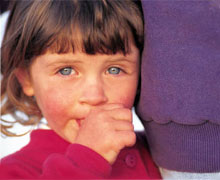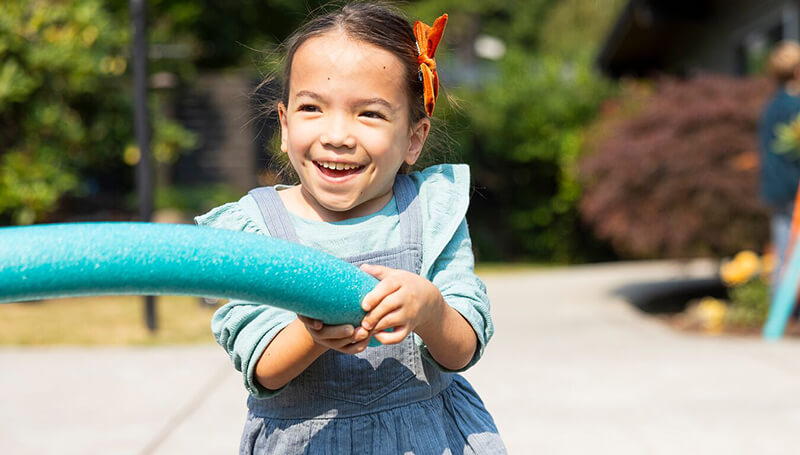Discipline
What is discipline?
 Discipline is a way to teach and guide your child so that they know how to behave or follow rules. There are lots of ways to encourage your child's good behavior. One way involves knowing what to expect from your child at each stage of development, setting limits and using praise. It's never too late to start using this process, but starting when your child is young is easier.
Discipline is a way to teach and guide your child so that they know how to behave or follow rules. There are lots of ways to encourage your child's good behavior. One way involves knowing what to expect from your child at each stage of development, setting limits and using praise. It's never too late to start using this process, but starting when your child is young is easier.
Know What to Expect, and Then Set Limits
Does the way you expect your child to behave match their age or developmental level? For instance, you can expect many 5-year-olds to share toys, but not a 2-year-old. As you set limits and decide on rules, make sure they are right for your child's level.
Set a few major rules at first and then add to the list. This gives you and your child a chance to practice. Start with rules that keep your child safe. Make sure that the rules are simple and clear. Toddlers and young children will need to hear and practice rules many times before they understand. It helps to explain the "why" behind the rules. "We don't hit others; hitting hurts."
Be sure that your child's other caregivers will enforce these rules. It's hard for a child when something is OK when mom is home but not OK when dad is home.
How can I use praise to shape my child's behavior?
Catch your child behaving well and tell them that you notice. This will help to increase the behaviors your child does that you like. When you hug your child and say, "I am so proud of the way you picked up your room," you reward them with praise.
Focus more on what you want your child to do instead of not do. For instance, if your child stalls and resists cleaning up, as soon as you see the smallest effort, say, "Oh, I really like the way you are picking up!"
What do I do when problems arise?
It is normal for your child to forget the rules, test limits and make wrong choices at times. When a problem comes up, stop the action and restate the rule. "Hands are not for hitting. Hitting hurts." Use a calm, matter-of-fact tone.
Involve your child in finding ways to solve their conflicts. Offer other options to redirect your child when they're doing something that you don't allow. Help your child find a better way to get what they want. "Put your hand on my arm and wait until I stop talking to ask your question."
Parents and caregivers are people, too. If you are stressed or having a hard time, make sure your child is in a safe place and take a few minutes for yourself in another room. Have a plan for when you are feeling too much stress - have a list of three people or places you can call when the stress of parenting is getting to you.
How do I enforce the rules?
Discuss how to enforce the rules with your child's other caregivers. It works best to match consequences to actions. So if your child throws a toy truck, put the truck away for the rest of the day. If your child draws on the wall, have them help you clean the wall.
Many families use time-outs and they can work for kids 2½ to 12 years old. If you choose to use time-outs, explain to your child that when they break a certain rule they will get a time-out. Find a boring place near the family action to use for time-outs, like a chair in the corner or the bottom step for older kids. Tell your child they must be quiet during their time-out. A good rule of thumb for time-outs is to have your child sit there one minute for each year of age. Don't overuse time-outs - save it for one or two behaviors that you can't accept. Be consistent.
Tips for Success
- You can avoid some discipline problems with young children by moving unsafe items out of their reach. This easy step keeps them safe and reduces the number of rules you need to set and enforce.
- Conflicts often happen when children are tired, hungry, bored or surprised by a change in routine. Make sure your child gets plenty of rest, eats healthy meals and snacks, has something to do while on errands and knows what to expect.
- Don't make promises that you can't keep. For example, only say you'll stop at the park after the other errands if you are sure there will be time.
- It can help to give your child a warning when it is time to change from one activity to another, like when going from playtime to clean-up. "Five more minutes to play and then we will clean up."
- Avoid trying to change more than one problem behavior at a time and allow time for change.
- While you focus on a few rules, you may try ignoring behaviors like whining, arguing, tantrums and interruptions. Sometimes, ignoring these behaviors makes them stop because your child isn't getting attention for them. Tell your child ahead of time what behavior you are going to ignore. Don't ignore behaviors that are unsafe to your child or others.
- Rules will change as your child gets older. Explain changes and talk them over with your child so that they are clear on what is OK and what is not OK.
- Be very clear about exceptions to rules: "You can ride your bike in the street only when I am riding with you."
- Know there is no one right way. Things that work well will change as your child grows. What works with one child may not work with another.
- Try to have special time for just you and your child on a regular basis.
- Act as you would like your child to act. Use words to tell others when you're angry and give yourself time to cool down before reacting to situations. How you act is the most powerful way to teach your child.
Remember that setting limits with love and treating your child with respect shows them that you value them. This is one of the best ways to build up your child's self-esteem.

